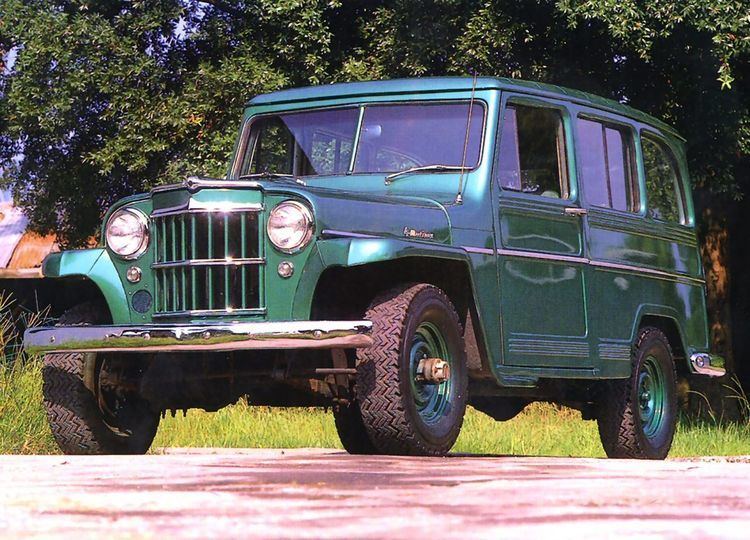Production 1946–1981 | ||
 | ||
Manufacturer Willys
Ford Brazil
Industrias Kaiser Argentina Also called Ford Rural, IKA Estanciera Class Full-size car Sport utility vehicle Body style 2-door or 4-door station wagon
panel van
pickup truck Related | ||
The Willys Jeep Station Wagon is an automobile which was produced by Willys in the United States from 1946 to 1965 with production in Argentina continuing until 1981 as the IKA Estanciera. It was the first mass-market all-steel station wagon designed and built as a passenger vehicle.
Contents
With over 300,000 wagons and its variants built in the U.S., it was one of Willys' most successful post-World War II models. Its production coincided with consumers moving to the suburbs.
The Jeep Wagon was assembled in several international markets under various forms of joint ventures, licenses, or knock-down kits.
Development and reception
The Jeep Wagon was designed in the mid-1940s by industrial designer Brooks Stevens. Willys did not make their own bodies, car bodies were in high demand, and Willys was known to have limited finances. Brooks therefore designed bodies that could be built by sheet metal fabricators who normally made parts for household appliances and could draw sheet metal no more than 6 inches (152 mm).
The Jeep Wagon was the first Willys product with independent front suspension. Barney Roos, Willys' chief engineer, developed a system based on a transverse seven-leaf spring. The system, called "Planadyne" by Willys, was similar in concept to the "planar" suspension Roos had developed for Studebaker in the mid-1930s.
The steel body was efficient to mass-produce, easier to maintain and safer than the real wood-bodied station wagon versions at the time. Within the first two years of the Jeep Wagon's production, the only manufacturer in the United States with a station wagon that was comparable in price was Crosley, who introduced an all-steel wagon in 1947. With a wheelbase of 80 inches (2,032 mm) and an overall length of 145 inches (3,683 mm), Crosley's wagon was much smaller than the Jeep Wagon, and was described as "diminutive" and "tiny".
USA
Brazil
In the 1950s a version based on the 1946 US version was introduced. A truck version, the Pick Up, was introduced in 1961. Ford Brazil bought the Willys factory in 1967 and the wagon was renamed Ford Rural, and the truck the Ford F-75. Both models were offered with an inline-six engine which was the first gasoline engine manufactured in Brazil. They were available in RWD or 4X4 configuration. The Rural was discontinued in 1977 and the F-75 in 1981.
Argentina
The Jeep Wagon was produced as the IKA Estanciera by Industrias Kaiser Argentina from 1957 to 1970.
